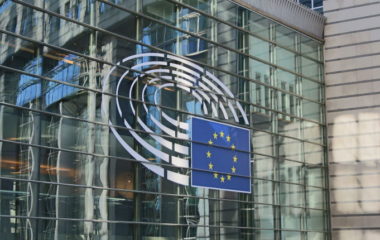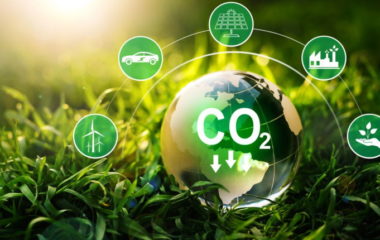
Photo: Eric VIDAL / European Union 2022 - EP
According to the European Parliament’s negotiating position, industrial producers in the EU will keep getting free carbon emission allowances for two years after importers start paying the CO2 border tax in full in 2030 under the Carbon Border Adjustment Mechanism. Such a move could be interpreted as protectionism.
The European Parliament is set to begin negotiations with the European Council on reforming the system to reduce greenhouse gas emissions in line with the Fit-for-55 climate package. After a failed attempt and a heated discussion, an overwhelming majority of legislators adopted the positions on changing the European Union’s Emissions Trading System, the introduction of a CO2 tax through the Carbon Border Adjustment Mechanism and the launch of the Social Climate Fund.
The goal is to cut greenhouse gas emissions by at least 55% by 2030 compared to 1990 levels, and to have net zero greenhouse gas emissions or climate neutrality by 2050, in line with the European Climate Law. The negotiations on the three draft laws with member states can begin when the European Council adopts its own position.
Emissions Trading System reform
The EU assembly said it wants to incentivize industries to further reduce their emissions and invest in low-carbon technologies. It voted to introduce a separate ETS for fuel distribution for commercial road transportation and buildings. Residential buildings and private transport would be excluded until 2029.
The European Parliament intends to roll out ETS 2 at the beginning of 2024, one year earlier than proposed by the European Commission. The existing ETS would be expanded to maritime transportation and municipal waste incineration.
The negotiating position is to increase the targeted reduction in ETS emissions for 2030 to 63%
MEPs agreed that the European Commission’s ambition to reduce emissions in the ETS sectors by 2030, measured from 2005, should be increased from 61% to 63%. It is to be achieved through further one-off cuts to the EU-wide quantity of allowances in circulation and an increase in annual reductions.
The European Parliament’s Committee on Environment, Public Health and Food Safety (ENVI) initially proposed 68%.
The parliament wants to introduce a so-called bonus-malus system to incentivize best performers and innovation and reward the most efficient installations in a sector with additional free allowances. The firms that fail to implement the recommendations made in the energy audits, to certify their energy systems or to establish a decarbonization plan for their installations, will lose some or even all of their free allowances, according to the document.
WTO compliance issue
The free allowances in the ETS sectors covered by the planned Carbon Border Adjustment Mechanism (CBAM) would be phased out from 2027 and disappear by the beginning of 2032. The amount of free allowances would be reduced to 93% in 2027, 84% in 2028, 69% in 2029, 50% in 2030 and 25% in 2031.
The process would end three years earlier than foreseen by the European Commission. However, it means the domestic industry would enjoy a significant degree of protection even after importers start paying the CO2 border tax in full.
The European Parliament wants to protect EU exporters simultaneously with free CO2 credits, the CBAM tax and a bonus-malus system
When the European Parliament adopted a resolution on the carbon border tax in March, it stressed it must be compatible with the rules of the World Trade Organization and not be misused to enhance protectionism. But the current proposal would result in two protection layers for two years, as the CBAM would kick in fully at the beginning of 2030. There is also the issue of whether the bonus-malus system would be another one.
The affected industries in the EU have claimed free CO2 allowances ensure competitiveness and that they should be maintained at least until CBAM’s effectiveness is proven.
CBAM is designed to mirror and complement the EU ETS. It would cover a part of its sectors. The tool is aimed at preventing carbon leakage, which is when manufacturers move their facilities to countries with less strict climate rules.
MEPs voted to expand the Emissions Trading System to maritime transportation, municipal waste incineration, organic chemicals, plastics and hydrogen
The levy is planned to cover the electricity sector and energy-intensive industry: cement, steel, aluminum, oil refining, paper, glass, chemicals and fertilisers. MEPs now initiated the expansion to organic chemicals, plastics and hydrogen. They also voted to include indirect emissions, particularly the electricity that manufacturers use in the production of imported goods.
The CO2 tax could have a big impact on the EU’s trading partners including the Western Balkans, especially the countries that are reliant on coal. Energy Community contracting parties have strict conditions to meet to be exempted from CBAM for electricity until 2030.
Carbon charges would be used only for climate action, just transition
Both the EU and member states must spend all of their ETS revenues on climate action or in upskilling and reskilling of workers potentially affected by the green transition, the European Parliament said.
The negotiating position supports the European Commission’s proposal on the Modernisation Fund to improve energy efficiency and modernize the energy systems in less wealthy member states. The fund could also finance cross-border projects with low-growth border regions that would otherwise not be eligible for funding, the document reads.
The Social Climate Fund would use revenues from the EU ETS to assist the vulnerable population.


















Be the first one to comment on this article.